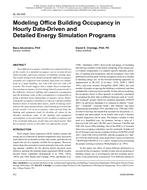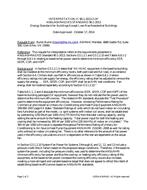Building materials are often touted as being “greenâ€Â, without a robust scientific definition of the meaning of this term. Nevertheless, there is a rapidly expanding market for such materials. One criterion that is sometimes used for green materials is that they are low emitting. However, this criterion generally applies to so-called “primary†emissions, typically of volatile organic compounds (VOCs), which are emitted from the actual components of the manufactured product. In fact, many green materials are bio-based, and comprised of components that may be highly reactive with ozone. This leads to the potential for significant “secondary†emissions of reaction products such as aldehydes and ketones. This study focuses on the reactivity of ten common green wall, flooring, ceiling, and cabinetry materials with ozone. More specifically, small electro-polished stainless steel chambers were used to expose these materials (ceiling tile, unglazed ceramic tile, natural cork wallpaper, aluminum tinted cork wallpaper, bamboo, UV-coated bamboo, wheat board, UV-coated wheat board, sunflower board, and UV-coated sunflower board) to ozone at realistic indoor concentrations. The test materials found to be the most reactive with ozone were the green ceiling tile, natural cork wall-paper, and wheat board. Predictions of the ratio of indoor to outdoor ozone concentrations (I/O) suggest that green materials may not have a significant effect on indoor ozone concentrations, although the authors acknowledge that more work is needed before definitive conclusions can be drawn on this issue.
IAQ 2007 Conference held in Baltimore, Maryland, October 14-17, 2007
Units: SI
Citation: IAQ Conference: IAQ 2007: Healthy and Sustainable Buildings
Product Details
- Published:
- 2008
- Number of Pages:
- 10
- File Size:
- 1 file , 650 KB
- Product Code(s):
- D-IAQ2007-17


